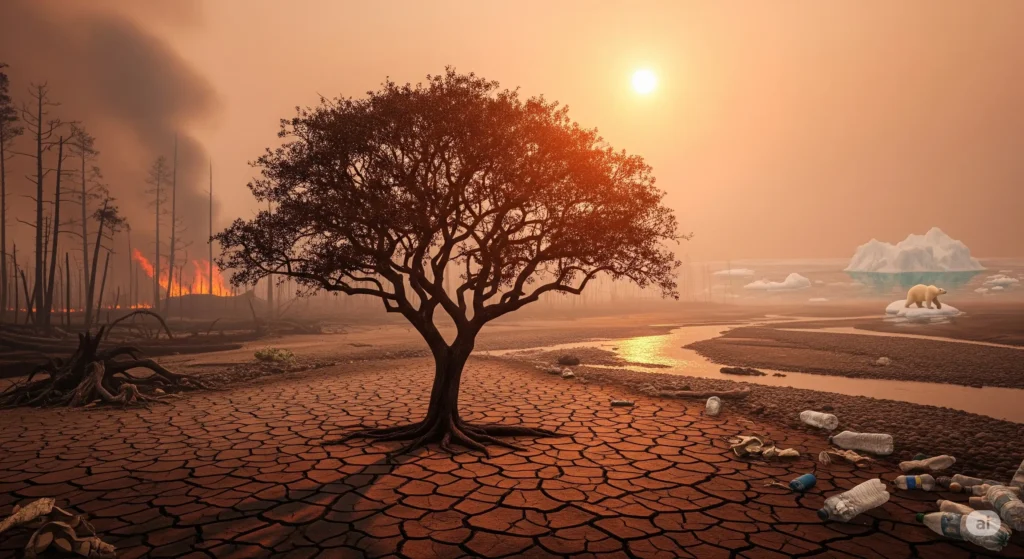
Climate change is not just in topic anymore. Some of the countries are making some significant changes to make the environment cleaner and better.
Just in the UK, by 2050, the Climate Change Act mandates that greenhouse gas emissions be reduced by at least 100% of 1990 levels (Net Zero).
But what other countries are changing in their policies? Let’s find out.
A Shift in Climate Politics: New Leaders, New Directions
Due to the persistent issues in the US and the UK, significant changes in leadership, and the desire of people, scientists, and even corporations to address the climate crisis.
The government of the UK has expressed concern regarding greenhouse gas emissions. They have been successful in reducing their greenhouse gas emissions thus far, and they aim to reach net zero emissions by 2050.
One of the biggest carbon emitters in the world is the United States, which is located across the Atlantic. They don’t care much about climate change, even though every administration change has a significant impact on social, immigration, and foreign affairs issues in addition to climate policy.
The UK’s Climate Vision: Clean Energy and a Green Comeback
There is a great decline in electricity supply, which has fallen by more than three-quarters since 1990. This is all due to a decline in the use of fossil fuels, specifically coal. But the UK government is now relying on renewable energy.
One of the best moves made this year was the launch of Great British Energy, a publicly-owned clean energy company. Their mission is to increase offshore wind capacity fivefold by 2030.
This isn’t about lowering carbon emissions; it’s also an economic opportunity. The Greenhouse Prosperity plan will breathe new life into the economy by creating green manufacturing jobs, improving building efficiency, and training a skilled renewable workforce.
Big words aside, there remains a significant gap in how we are adjusting to the climate change already at our doorstep.
A report shown earlier this year criticized the UK’s adaptation strategy, showing that while the policies may sound impressive, actual on-the-ground implementation, like flood protections and heatwave plans, and other safety measures, is falling behind.
Green dreams, Red lights: The US Battle Over Climate action
There have been more plot twists in US climate change over the years than any film could ever have.
Withdrawing from the Paris Agreement and limiting its support for climate transition in developing nations are two examples of the US’s involvement in the global fight against climate change. The current administration strongly favors fossil fuel interests and deregulation.
By 2035, the government wants to reduce manufacturing-related emissions by roughly two-thirds. This could potentially harm the company’s overseas production.
Nonetheless, a new push to repeal significant climate regulations was sparked by political changes in 2025.
Among the most significant revolutions?
The proposed elimination of the EPA’s greenhouse gas regulation powers under the Clean Air Act. The ability of the country to regulate emissions nationally may be seriously hampered by this legal action.
Green Energy, Jobs, and Your Bills
So the actual question arises here: what benefits does it bring for everyday people?
This reduction in energy costs can increase disposable income for households and give rise to local communities to enjoy the basic needs of life in today’s industries. And then also there’s the job market.
Many renewable energy projects, particularly wind farms and Bioenergy plants, are located in rural areas, boosting local economies and providing more opportunities for electricians, engineers, builders, and tech workers alike. The green job wave is real.
Climate policy isn’t just about cutting emissions, it’s about helping people adapt, too. In both the US and UK, extreme weather like floods and heatwaves is hitting harder and more often. So now it’s just as important to protect communities, think cooling centers, sea walls, and farms that can survive droughts.
The ups and downs that No One Wants to Talk About
We all know that Climate promises are easier to make than to keep.
Economies with indigenous fossil fuel industries will face a trade-off as they wind down fossil extraction and refinement in favour of investment in renewable energy.
Furthermore, major economies do not invest in the development of green technologies; they will fail to seize the opportunity to export those technologies.
Many other challenges are also faced, such as Money. While green policies can create long-term savings, they require up-front investment. Governments need to convince taxpayers and voters that this isn’t just about saving polar bears, it’s about future-proofing our economies, our health, and our homes.
So, What’s the Verdict?
There has been a climatic crisis and not just in the UK or the US, but all over the world. Although the UK is setting the standard for sustainable energy and job growth, it needs to move faster to fulfill its commitments, especially when it comes to climate adaptation.
The United States is experiencing political whiplash. Because federal policies are being pulled in multiple directions, states and local governments are stepping in to fill the hole.
Although governments may take the lead, action at all levels, cities, corporations, neighborhoods, and individuals, will be necessary to achieve real climate success.
Conclusion
Just remember that you are a part of the larger picture, whether you are installing solar panels or simply choosing to walk rather than drive. Climate policies are influencing the world you live in every day, even if they may seem like something that only happens in distant parliaments and congress halls.
Thus, be vigilant. Ask questions. When possible, choose sustainable options. Because change always begins locally, despite the fact that climate change is a global concern.

